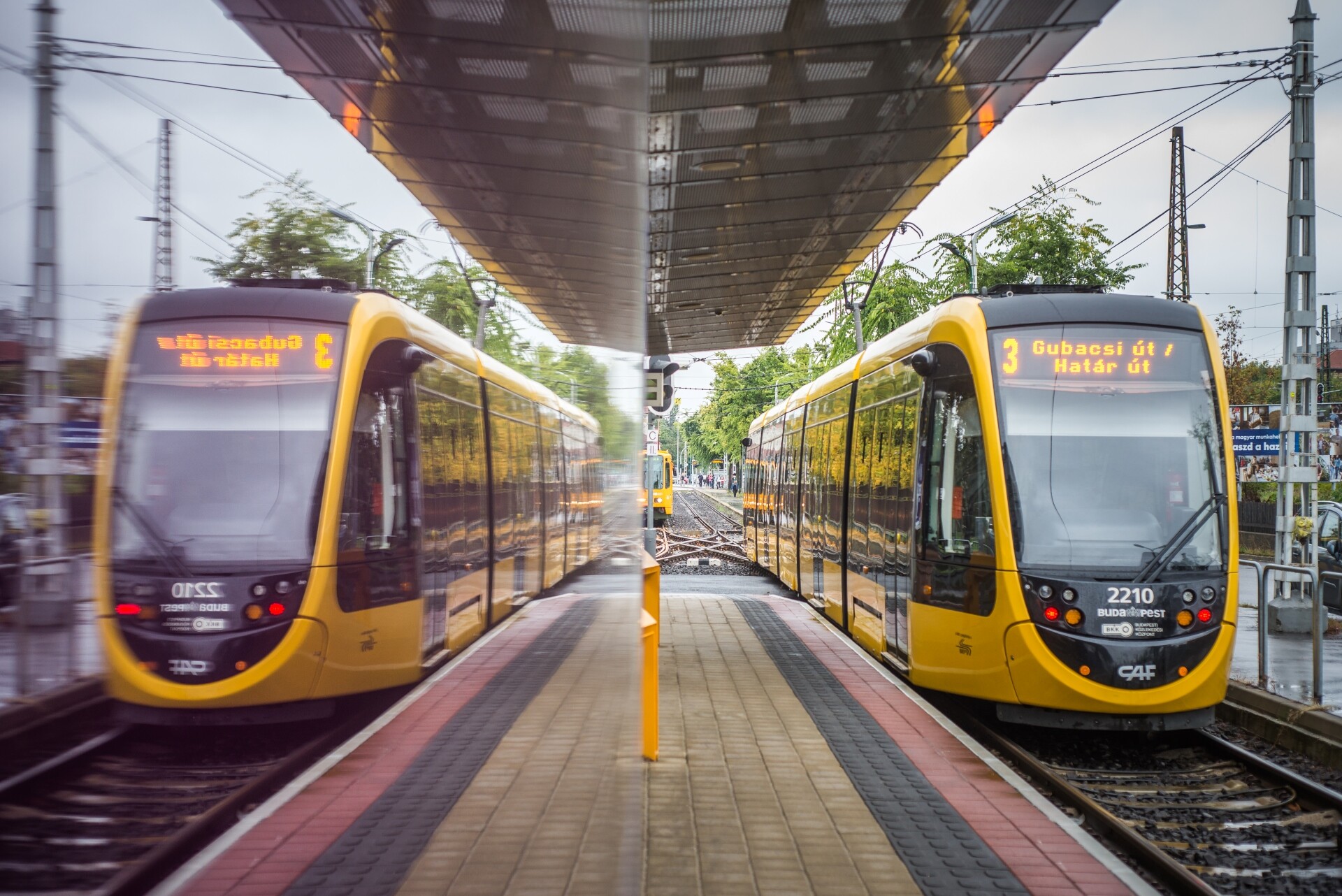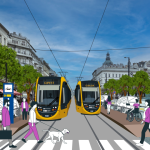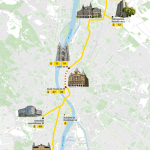 Budapest metro and tram development projects can begin as city’s public transport authority BKK has submitted a HUF 10 billion (EUR 26.7 million) grant application for EU funding under the 2021 – 2027 financial framework through the Development Operational Programme Plus (IKOP Plusz). The financial support is part of a HUF 300 billion (EUR 800.5 million) EU funds announced by the Budapest Mayor Gergely Karácsony in January.
Budapest metro and tram development projects can begin as city’s public transport authority BKK has submitted a HUF 10 billion (EUR 26.7 million) grant application for EU funding under the 2021 – 2027 financial framework through the Development Operational Programme Plus (IKOP Plusz). The financial support is part of a HUF 300 billion (EUR 800.5 million) EU funds announced by the Budapest Mayor Gergely Karácsony in January.
The authorities plan the construction new tram lines connecting Pest and Buda, a new tram ring in Pest as well as the extension of tram line 42.
These projects submitted under IKOP Plusz are included in the Budapest mobility Plan and covers:
- preparing the extension of a small underground connection and the renovation of the existing lines;
- the preparation and planning of the connection of the North-Pest and South-Buda tram with the rehabilitation of the sections on Váci and Bajcsy-Zsilinszky streets and the renovation of Nyugati Square (Pest – Buda tram line);
- preparation of the first phase of the South Budapest tram ring covering the extension of tram line 3 to Pesterzsébet;
- the extension of tram line 42
The extension projects are the first phase of Budapest public transport development, as BKK plans to submit another grant application for further projects and measures which will contribute to the achievement of the transport and urban development goals defined in the Budapest Mobility Plan. The BKK will report in detail on the schedule of implementation and planning, the public consultation processes and the planned technical design of the projects in the coming period.
The Buda – Pest tram line phase II will start soon, BKK announces as preparations and planning work is ongoing. If the project is implemented, the travel time will be reduced, and trams will be able to run from Budafok to Káposztámegyer on the Buda – Pest tram line. The implementation of the project can have a great impact on the entire Budapest tram network. A line connection without transfers can be created between Northern Pest and Southern Buda thanks to the tracks to be rebuilt between Deák Ferenc square (a major transport junction in the city) and Lehel square. The preparation and planning of the project can be realised with the support of the EU. This project will allow trams to return to Bajcsy-Zsilinszky street and the southern part of Váci street.
The construction of Buda – Pest tram line will provide access to the city centre increasing public transport attractivity. According to estimations, between 8,000 and 9,000 new passengers will shift to public transport due to shorter travel time and connections without transfers and thousands of people travelling by car may switch to a sustainable mode of transport. Thanks to the lower emissions, up to 100 tonnes of CO2 will be reduced every year.
During the construction of the downtown section of the M3 metro, the tracks running on Bajcsy-Zsilinszky and Váci streets were dismantled, the terminus of the trams was designated at Lehel Square in the north, and Deák Ferenc Square in the south.
By reconstructing the Bajcsy-Zsilinszky and Váci tracks, a connection without transfers can be created between the areas of the capital. Thanks to the project, not only tracks will be built, but also public areas will be redesigned and will be fitted with new furniture. Under the project, not only the technical design of the future tram tracks is planned, but also their environment and the roads will be reconstructed and the existing stops will be modernised and will become barrier-free. The inner section of Bajcsy-Zsilinszky and Váci section and Nyugati square will be completely rebuilt.
The design of tram line 42 extension will also begin soon proving connection from Tulipán area in Kispest to Havanna-telep and Szent Lőrinc-telep residential neighborhoods towards Gloriett-telep residential area. Preparation and planning processes related to this project will start and the construction works will be carried out at the same time when the existing tram line will be renovated. Thanks to the project, residents of the Gloriett and Szent Lőrinc areas will have a fast and convenient metro connection, and it will sail be much easier for Havanna residents to have access to the M3 metro line. These residential areas do not have access to urban rail transport but only to bus services.
Budapest metro and tram development is part of the authorities’ plan to expand and improve the public transport across the city, especially between the suburban districts and the city centre. Thus, direct and convenient connections can be created to develop a zero-emission, sustainable and fast transport system.
Share on:






